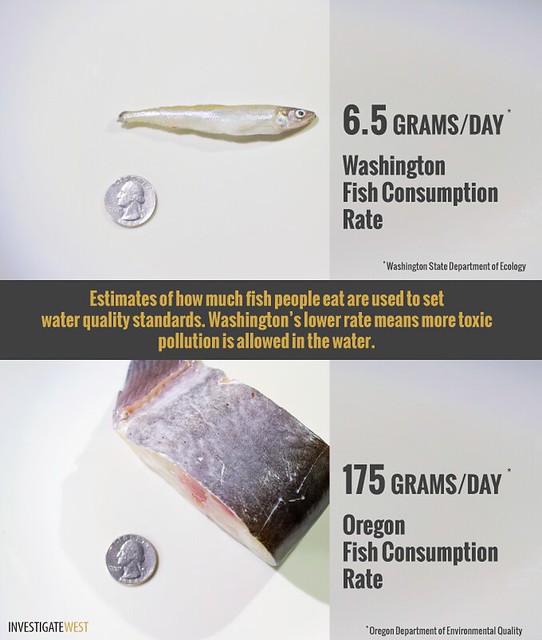Though higher now, reflecting a more accurate statistic, there seems to be no affect in limiting pollution
By Andrew Gobin, Tulalip News
Today, Governor Jay Inslee met with tribal leaders before holding a briefing on Washington’s Fish Consumption Rate (FCR) and water quality. The new FCR, now set at 175g per day, comes with the compromise that increases allowable pollution 1000 percent.
Originally set at 6.5g per day, Puget Sound tribes, with the support of the public minority, have been pushing to reexamine the FCR, seeking a number that more accurately reflects the amount of fish consumed by Washington residents per capita. The rate of 6.5g per day specifically included a section that mitigated the high consumption of seafood by tribal communities, allowing for a low number to be reached. The new rate of 175g per day is a more realistic representation of the seafood consumed by all Washington residents.
The FCR is a measurement used to gauge the impacts of water pollution on the public. Former standards stated that the acceptable level of toxins allowed could only lead to one in one million people to develop cancer. The FCR that was set at 6.5g was intended to allow for a tenfold increase in pollution and water toxin levels.
Although Washington’s FCR is now almost 30 times higher than what it was, the agreement to increase the FCR was achieved through a compromise, bargaining to increase the acceptable persons to get cancer from one in one million, to one in 100,000. That means that the acceptable level of pollution would be ten times higher.
In the NWIFC statement Lorraine Loomis, vice chair of the Northwest Indian Fisheries Commission and fisheries manager for the Swinomish Tribe, said, “This is a political decision, not one based on sound science. While a toxics control effort is needed, it is not an effective replacement for strong water quality rules and standards. We cannot continue with a pollution-based economy.”
“We’ve been working with the state on this issue for more than 20 years. We need action,” she added.
Tribes will be meeting with the EPA to review the proposed changes and evaluate their next move.
Andrew Gobin is a staff reporter with the Tulalip News See-Yaht-Sub, a publication of the Tulalip Tribes Communications Department.
Email: agobin@tulalipnews.com
Phone: (360) 716.4188



